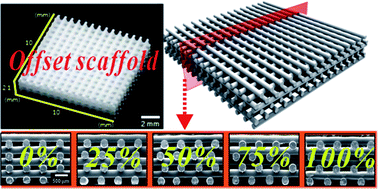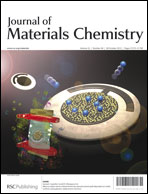Effects of offset values of solid freeform fabricated PCL–β-TCP scaffolds on mechanical properties and cellular activities in bone tissue regeneration
Abstract
Scaffolds used in bone tissue regeneration should have highly porous micro-architecture. In addition, they should have high mechanical properties and be biodegradable and biocompatible. In this respect, the solid freeform fabricated PCL–β-TCP scaffold has been widely applied in bone tissue regeneration. In this study, we designed PCL–β-TCP (20 wt%) scaffolds with various offset values, so that the fabricated scaffolds showed five different pore sizes that were dependent on the offset value (0%, 25%, 50%, 75%, and 100%), which showed very similar porosity (about 62%), a square pore shape, and 100% pore interconnectivity. The fabricated scaffolds were assessed not only for physical properties, including calculated bending modulus and water-uptake ability, but also for biological capabilities by culturing osteoblast-like cells (MG63) for various offset values of the scaffolds. Compared with the no-offset scaffolds, the offset scaffolds (especially those with offset values of 50% and 100%) showed superior physical and biological improvements, such as higher bending modulus (maximum increase of 7%), cell-seeding efficiency, cell viability (increase of about 60%), ALP activity (increase of about 50%), and calcium deposition.


 Please wait while we load your content...
Please wait while we load your content...